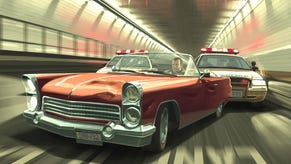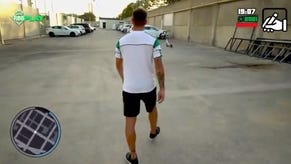Grand Theft Auto IV: PS3 vs. Xbox 360 Special
Including high-def video split down the centre.
Lighting, Draw Distance and Effects
This section of the feature mainly came about to prove or disprove a lot of the claims floating about online concerning apparent technical differences between the two games. As the vast majority of them were derived mostly from looking at screenshots other people had posted, or guesswork based on the advantages of the PS3's hard disk installation, I thought they were worth putting to the test.
Part of the reason this face-off has taken so long to put together is because actually matching the two games up is a really tough task. To get truly comparable shots, you really need to be capturing the action at the same time during the game's day-night cycle and more than that, you doubly need to make sure that the weather is identical too - not so easy when it appears to change in an arbitrary manner. Thankfully, the recently-released cheat codes allowed me to match up the weather identically before each capture was initiated, the only variable being the time taken to accomplish the same mission on both versions.
Time for a spot of myth-busting then. Aside from a slight tweak to the colour palette (going back once again to Houser's 'warmer' PS3 comments), the two games feature virtually identical lighting. Day and night cycles are basically the same, weather likewise. A case has also been made online with judiciously chosen screenshots that the PS3 version has better-realised explosion effects, but again, in controlled conditions this is proven not to be the case. In fact, the only lighting issue between the two versions that stands out is a shimmering on shadows on the 360 version. Noticeably improved on PS3, but hardly earth-shaking stuff.
To accompany the video are precision 720p shots of lighting and effects in the game.
Onto the next bone of contention then: draw distance. The theory is that the PS3's mandatory hard disk installation gives the Sony version an advantage here, but once again, the evidence clearly shows that the Xbox 360 game matches it. It's not difficult to see why. If the hard disk is good for anything, it's the swift streaming of texture detail, not the actual geometry.
Despite the hard disk advantage of PS3, I found it very hard indeed to show a tangible advantage in terms of texture streaming, aside from whatever wear and tear on the 360's DVD-ROM unit the game might inflict long-term. Maniacal flying of the helicopter showed obvious pop-in on 360 that the PS3 version coped better with, but in more common game conditions both versions acted in a very similar manner. In fact, both games infrequently exhibited pop-in textures, something you wouldn't expect from the PS3 code.
This video is backed up by 720p precision shots of good draw distance examples taken from the raw, uncompressed captures.
1080i/1080p Support
Both versions of the game have support for 1080i and 1080p monitors, even though the actual output is being scaled up from the base resolution (640p for PS3, 720p for Xbox 360). In the case of PlayStation 3, the effect only kicks in at all if 720p is not activated on the XMB, the implication being that Rockstar is happier with your screen handling the resizing work. Certainly, the lower resolution and (dare I say it) 'jagginess' are exaggerated in the scaling process, which isn't particularly good.
On the plus side, while software upscaling more often than not results in a drop in frame-rate, the refresh rate of the PlayStation 3 version of GTA IV is barely affected, regardless of whether 1080i or 1080p is selected.
We're on far more familiar ground with the Xbox 360 version of the game in that it's following the usual form of handing off the scaling duties to the ATI GPU. That being the case, it actually looks pretty good. While the texture dithering problem is still clearly apparent, the scaling does help to smooth off the effect a touch, meaning that the apparently 'clinical' look has had the edge taken off. More than that, the ATI chip works particularly well with an anti-aliased image to process, and as GTA IV supports that, the overall effect is fairly pleasing.
Also worth noting is that both versions have proper, non-letterboxed 4:3 support for standard definition screens, and 360 even has 5:4 compatibility for those running their consoles connected to non-widescreen LCD monitors.
You can see a few examples of how the game looks upscaled on both formats in our upscaled 1080p comparison gallery.








